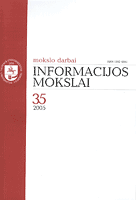Finansinės atskaitomybės audito tikslo, procedūrų, išvadų ir ataskaitų apimčių santykis
The Proportion of Financial Statements’ Auditing Goals, Procedures and Conclusions to the Report Coverage
Author(s): Vaclovas LakisSubject(s): Economy
Published by: Vilniaus Universiteto Leidykla
Summary/Abstract: The article investigates the auditing goals of financial statements, auditors’ responsibility and informing the public about auditing results. The analysis of auditing goals confirm, in the case of having achieved the auditing goals, that the users are not always satisfied with the results. Potential investors and shareholders get very little information about the audit. They cannot find the necessary information about machines and equipment depreciation, technologies, supply of raw materials, stability of product sales market, staff skills and about the company’s development perspectives. The company’s administration have a better access to the information, as the auditing standards foresee that together with auditor’s conclusion a letter should be presented indicating the shortcomings of accounting and internal control. On the other hand, top managers of the company are informed about the revealed frauds, or possible frauds, and therefore about the misinterpretation of financial statements. Clients do not get the whole information which an auditor has collected during auditing, i. e. audit planning, the character of procedures, time and scope, the results, and auditor’s opinion on other important issues. As the research indicates, the top managers would like to have more information in order to make certain decisions. The information presented to the client does not present the opinion about the quality of auditor’s performance. The client is paying for auditing services and he should be the one to evaluate the auditor’s job. The auditing standards foresee a certain degree of risks that some significant misinterpretations will be disclosed. The auditing standards do not describe what an the auditor must detect. Because of the lack of certain limitations, there is a possibility that an auditor may avoid responsibility if he fails to detect certain facts. In compliance with the Auditing Law, the auditing report must be presented to the governmental and municipality bodies and joint-stock companies where the state and municipality have more than half of the total shares. In other cases, only the auditor’s conclusion must be presented. State financial audit is considered to be over when the auditor’s report and conclusion are presented, which shows the lack of a unanimous point of view on the necessity of the audit report. Everything depends on the ownership of the legal entity, i. e. the state, municipality or a physical entity. However, the form of ownership should not be the criteria on which the auditor report’s necessity should be based. Requirements for auditing reports must be set in compliance with the national standard of auditing.
Journal: Informacijos mokslai
- Issue Year: 2006
- Issue No: 37
- Page Range: 64-72
- Page Count: 9

